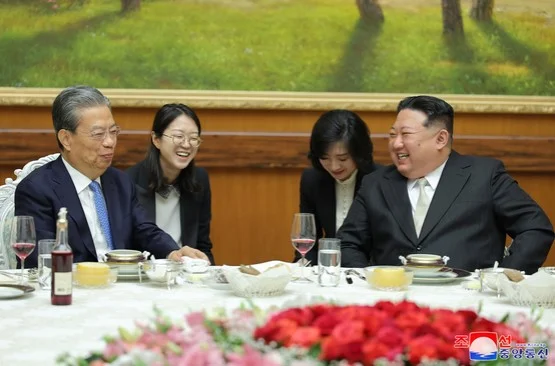영자신문읽기[고급] 신문 속 다양한 세상 이야기를 이제 영어로 만나보세요!
YouTube creates stars, dominates Korean market
2019-01-10

YouTube has taken Korea by the storm, growing to become the country’s most influential video platform, creating overnight stars and national sensations.
In a 2017 survey of elementary students in which they were asked who they wanted to be when they grew up, YouTuber Ddotty ranked higher than Admiral Yi Sun-sin, one of the most celebrated figures in Korean history. The platform has extended beyond culture, music and games to other subjects, such as politics.
Shin Jae-min, a former employee at the Ministry of Economy and Finance, took to YouTube to vent. The former public official uploaded videos of himself leveling accusations against the Blue House, saying that it had pressured a private company to make personnel changes.
Shin’s first video has logged over 271,000 views, and his channel has attracted over 29,000 subscribers since it was first created at the end of 2018.
In addition to minting celebrities, the platform has generated impressive statistics.
In a 2017 survey of elementary students in which they were asked who they wanted to be when they grew up, YouTuber Ddotty ranked higher than Admiral Yi Sun-sin, one of the most celebrated figures in Korean history. The platform has extended beyond culture, music and games to other subjects, such as politics.
Shin Jae-min, a former employee at the Ministry of Economy and Finance, took to YouTube to vent. The former public official uploaded videos of himself leveling accusations against the Blue House, saying that it had pressured a private company to make personnel changes.
Shin’s first video has logged over 271,000 views, and his channel has attracted over 29,000 subscribers since it was first created at the end of 2018.
In addition to minting celebrities, the platform has generated impressive statistics.
According to YouTube Korea, over 400 hours of video content is uploaded every minute on YouTube globally, with 1.9 billion users watching one billion hours of video every day on the service.
As of November last year, the country had 31.22 million YouTube users. It has 38 million Android operating system users.
The platform’s monthly usage time is 31.7 billion minutes, ten times the combined usage of all competitors, a list that includes Oksusu, AfreecaTV, Naver TV and Netflix.
Despite its significant influence, YouTube was a free non-commercial channel when it was purchased by Google in 2006. In just over a decade, the video service has become a giant in the video-streaming business.
Experts point to Google’s business strategy of betting big rather than seeking immediate profits. It doesn’t focus so much on small streams of revenue, but instead works on expanding its market to capture a wider audience.
While Apple created a closed ecosystem with its iOS mobile operating system, Google developed Android, available to all developers free of charge.
Android has 88 percent of the mobile operating system market as of the second quarter of 2018.
“YouTube adopted the ‘grow-with-Google’ strategy and has enjoyed explosive popularity,” said Koo Tae-eon, an IT attorney from Tek & Law, a law firm.
To ensure growth, YouTube transfers a reasonable amount of profit to video creators in order to incentivize them. The platform provides 55 percent of advertising income to creators.
One view equals roughly one won (0.09 cents) in advertising income in Korea, and the funds are directly transferred to the creator’s bank account every month in a reliable manner.
For YouTube celebrities in Korea, the income can be a significant motivator.
Ddotty, which focuses on gaming content, generated YouTube income of 1.6 billion won in 2017.
“Income for content creators has to grow for Google’s profit to grow on YouTube,” said Chung Kim Kyung-suk, an official at Google Korea. “Google’s business model is based on the notion that nothing can succeed on its own.”
Experts note YouTube’s focus on consumer interest.
Viewership and advertising revenue are proportional to user attention. YouTube and its parent company Google both profit from this business model.
“Not only YouTube but all businesses in the content market ... compete for the viewer’s time,” explained Koo.
“In that sense, the content business is the business of attention ... YouTube has proved that attention has a monetary value.”
The video service has driven changes in traditional media.
The small number of dominant broadcasters in Korea must now compete with smartphone-wielding content creators who can produce a video in an instant.
“Content such as a boy falling into a stream by losing his balance ... would have never materialized if it was produced at a broadcasting station,” said Park Yong-hoo, a content-consulting expert.
“YouTube opened up a new world where daily activities become content, and that becomes money.”
Google’s management saw the potential of video.
YouTube CEO Susan Wojcicki, who has held the position since 2014, recognized the value of YouTube during the review meeting for Google’s acquisition of the service in 2006.
At the meeting, a video was shown of two men lip-syncing a pop song while another person in the background focuses on his computer, ignoring the two others.
The seemingly bizarre footage was an inspiration for Wojcicki.
The CEO said in a recent interview with U.S. media that she valued the potential that anyone can make video content. She considers YouTube as a key stage in the evolution of the internet.
While YouTube does not disclose its sales figures, the company reportedly earned around $15 billion last year.
The platform’s monthly usage time is 31.7 billion minutes, ten times the combined usage of all competitors, a list that includes Oksusu, AfreecaTV, Naver TV and Netflix.
Despite its significant influence, YouTube was a free non-commercial channel when it was purchased by Google in 2006. In just over a decade, the video service has become a giant in the video-streaming business.
Experts point to Google’s business strategy of betting big rather than seeking immediate profits. It doesn’t focus so much on small streams of revenue, but instead works on expanding its market to capture a wider audience.
While Apple created a closed ecosystem with its iOS mobile operating system, Google developed Android, available to all developers free of charge.
Android has 88 percent of the mobile operating system market as of the second quarter of 2018.
“YouTube adopted the ‘grow-with-Google’ strategy and has enjoyed explosive popularity,” said Koo Tae-eon, an IT attorney from Tek & Law, a law firm.
To ensure growth, YouTube transfers a reasonable amount of profit to video creators in order to incentivize them. The platform provides 55 percent of advertising income to creators.
One view equals roughly one won (0.09 cents) in advertising income in Korea, and the funds are directly transferred to the creator’s bank account every month in a reliable manner.
For YouTube celebrities in Korea, the income can be a significant motivator.
Ddotty, which focuses on gaming content, generated YouTube income of 1.6 billion won in 2017.
“Income for content creators has to grow for Google’s profit to grow on YouTube,” said Chung Kim Kyung-suk, an official at Google Korea. “Google’s business model is based on the notion that nothing can succeed on its own.”
Experts note YouTube’s focus on consumer interest.
Viewership and advertising revenue are proportional to user attention. YouTube and its parent company Google both profit from this business model.
“Not only YouTube but all businesses in the content market ... compete for the viewer’s time,” explained Koo.
“In that sense, the content business is the business of attention ... YouTube has proved that attention has a monetary value.”
The video service has driven changes in traditional media.
The small number of dominant broadcasters in Korea must now compete with smartphone-wielding content creators who can produce a video in an instant.
“Content such as a boy falling into a stream by losing his balance ... would have never materialized if it was produced at a broadcasting station,” said Park Yong-hoo, a content-consulting expert.
“YouTube opened up a new world where daily activities become content, and that becomes money.”
Google’s management saw the potential of video.
YouTube CEO Susan Wojcicki, who has held the position since 2014, recognized the value of YouTube during the review meeting for Google’s acquisition of the service in 2006.
At the meeting, a video was shown of two men lip-syncing a pop song while another person in the background focuses on his computer, ignoring the two others.
The seemingly bizarre footage was an inspiration for Wojcicki.
The CEO said in a recent interview with U.S. media that she valued the potential that anyone can make video content. She considers YouTube as a key stage in the evolution of the internet.
While YouTube does not disclose its sales figures, the company reportedly earned around $15 billion last year.

| 번호 | 기사목록 | 날짜 | 조회수 |
|---|---|---|---|
| 60 |
 |
2024-04-19 | 2374 |
| 59 |
 |
2024-04-18 | 4357 |
| 58 |
 |
2024-04-17 | 4296 |
| 57 |
 |
2024-04-16 | 4204 |
| 56 |
 |
2024-04-15 | 4014 |
| 55 |
 |
2024-04-14 | 3825 |
| 54 |
 |
2024-04-13 | 3605 |
| 53 |
 |
2024-04-12 | 3937 |



















